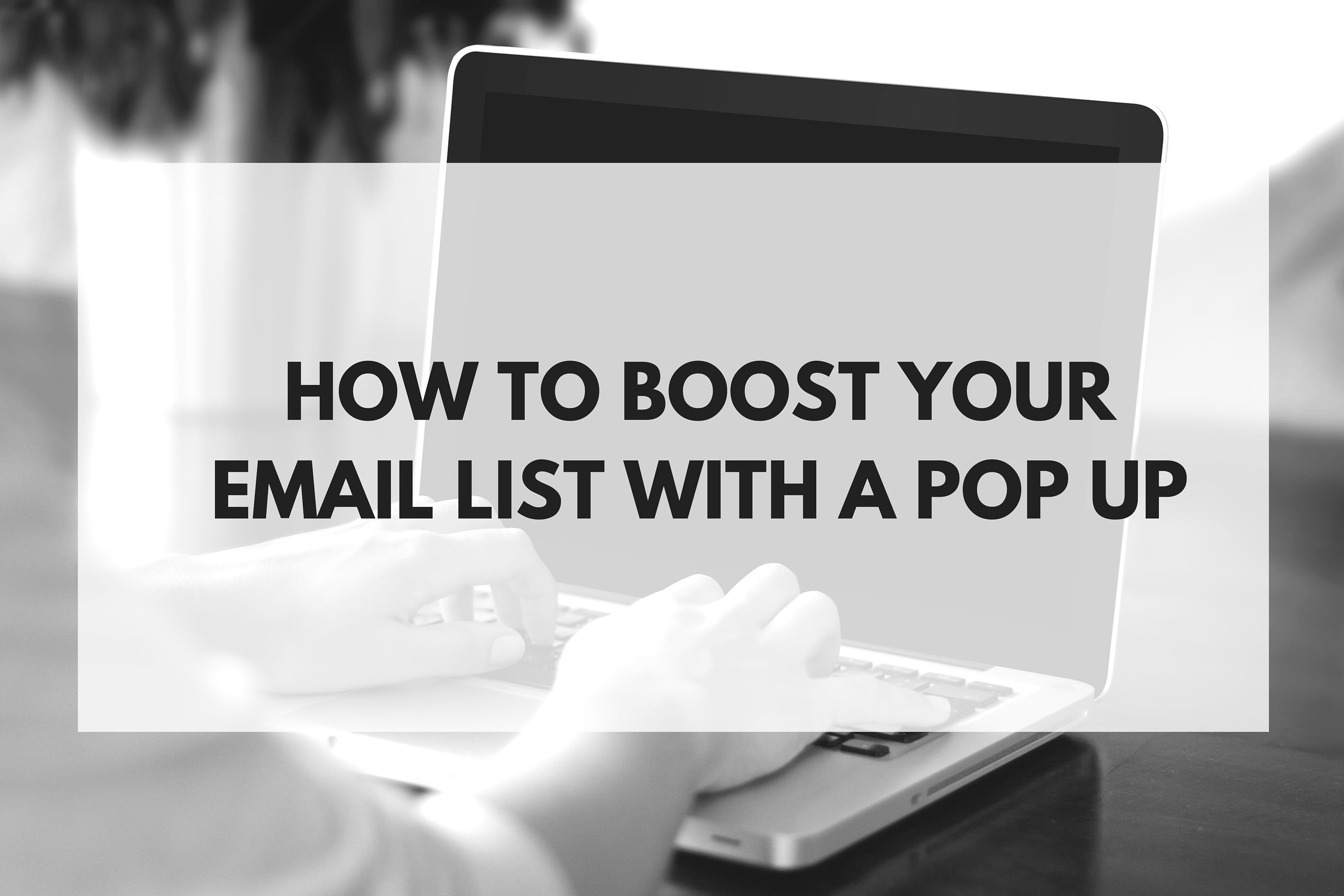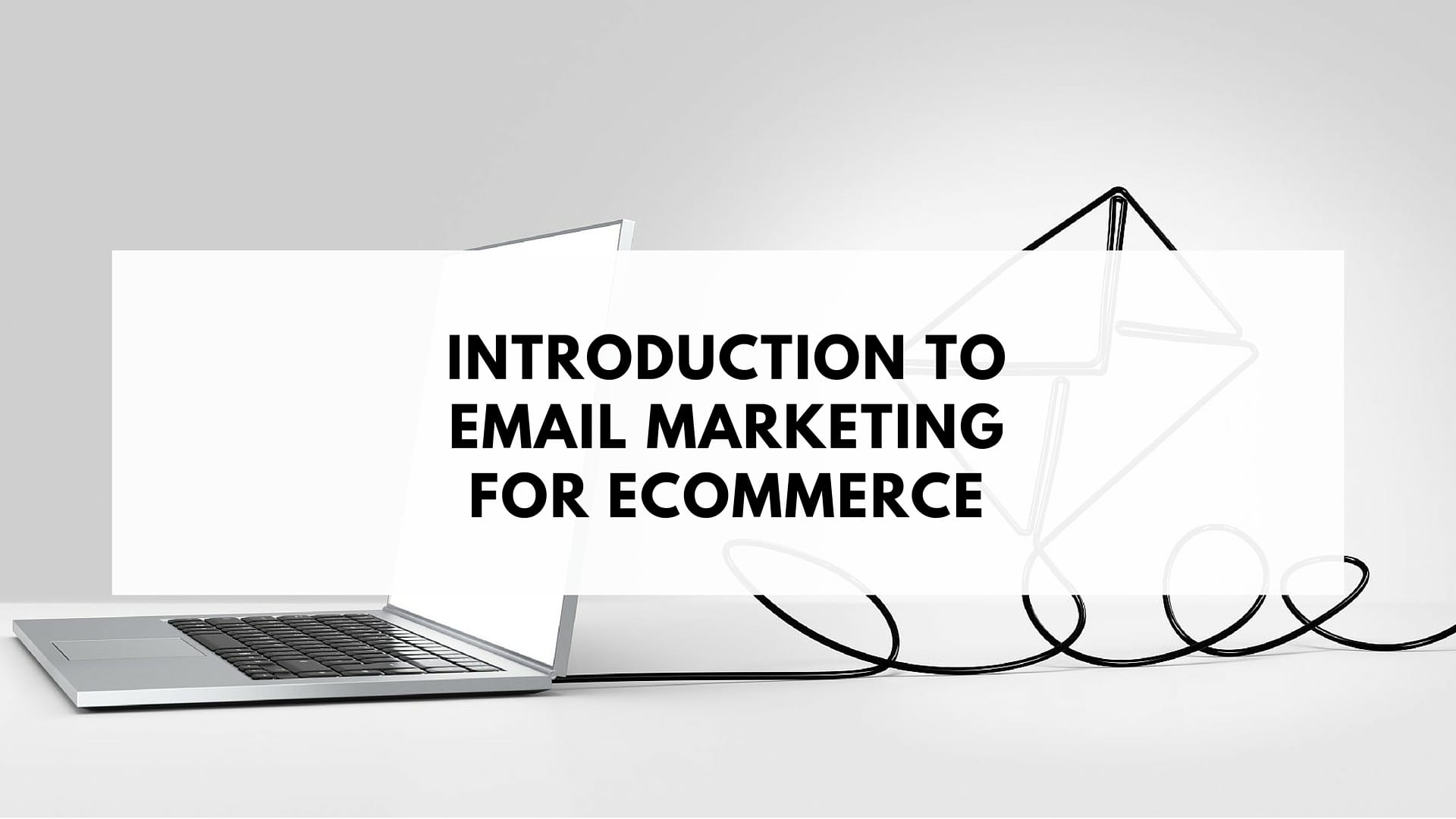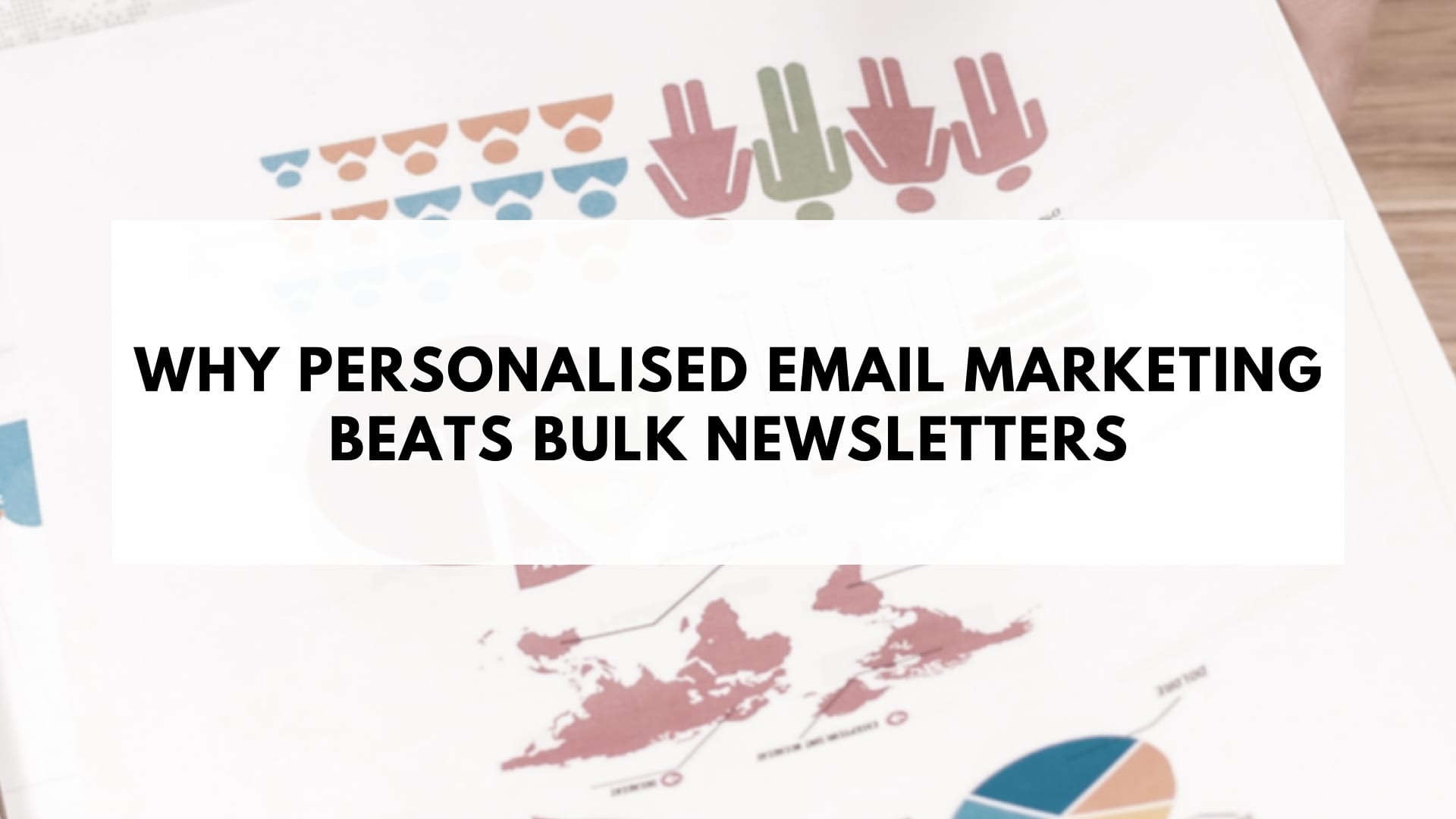I absolutely despise around 90% of marketing emails that hit my inbox, mainly because businesses are spamming me way too often.

Really? Six emails in six days. I order my groceries online every 8-12 days, so there is no reason to send me this many emails.
This is how I felt on the morning of the sixth email:

Sending too many emails can cause inbox fatigue which reduces open rates, impacts email deliverability, and is the number one reason consumers unsubscribe from an email list and in some rare cases, turn them into the Hulk.

While I hate 90% of promotional emails that hit my inbox because they are either too frequent or lack relevance, I absolutely love the 10% of businesses who have got their email marketing together and don’t overload my inbox and stop me from turning green.
Do you want your customers to love when you email them? Great, because in this article you’ll learn:
- Why sending too many emails can be harmful to growth
- How to figure out the right email frequency for your business,
- The 80/20 rule for email marketing,
- How to increase email frequency while also improving open rates, and
- How to send your emails (broadcast vs. automation).
Why sending too many emails can be harmful to growth
Having a high email frequency doesn’t only annoy your customers, but it also impacts the following aspects of your business:
Marketing ROI – If you’re using paid ads as part of your customer acquisition strategy, then if customers unsubscribe from your list it lowers your customer lifetime value. This puts more pressure on your marketing team too as they’ll need to acquire new customers at a lower cost per acquisition to show a profit.
Negative branding – How would you feel if you received six emails in six days? Well, let me tell you how I felt:
- Annoyed
- Disrespected
- Angry
Annoyed because each morning I wake up to an email alert when I’m not in the buying mood.
Disrespected because I feel like the business doesn’t value me as a customer or respect my time, because if they did they would not send me so many emails in a short space of time.
Angry because half the items they emailed me are things I’ve never purchased before or have any interest in.
And do you know what annoyed, disrespected, and angry customers do? They don’t shop at businesses that make them feel this way.
It hurts email deliverability – Email deliverability is the metric used to measure whether an email was accepted by the recipient’s email server. If you’re sending emails too frequently and customers aren’t opening them, deleting them without opening, or marking them as spam – ISPs such as Gmail and Outlook will start classifying your emails as spam for all their users.
These ISPs want to see evidence that your subscribers love receiving your emails. This includes opening them regularly and even moving them from the promotions tab to the inbox tab in Gmail.
With the current state of busy lives and full inboxes, I can bet that no one will be giving your daily emails the love or opens for you to maintain satisfactory deliverability.
In a nutshell….
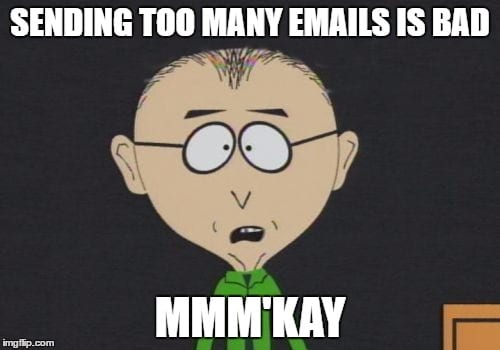
What is the optimal email frequency?
Your optimal send frequency is a different question than when the best time to send an email is. This is concerned about whether you’re emailing your subscribers too much.
The optimal email frequency depends on a number of factors, and you can get real scientific. But unless you’re generating millions of dollars per month in revenue, a good rule of thumb is to average your email frequency like so:

To get an idea of your ideal email frequency you’ll need to find your customer’s average purchase frequency and average time between purchases, which you can work out using the following math:
Average Purchase Frequency:
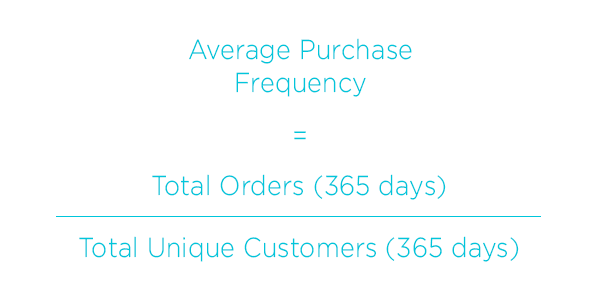
Average Time Between Purchases:
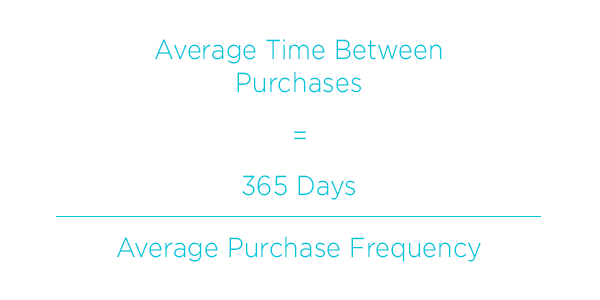
For example, if you receive 11 orders per day, that is 6,520 per year. Of these 6,520 orders, 450 are from unique customers. Therefore divide 6,520 by 450, your average purchase frequency is 14.4 per year.
To find the average time between purchases, you divide 14.4 orders per year by 365. So on average, a customer orders every 25 days.
Looking at the chart above, if the average time between purchases is 25 days, they should receive a maximum of 2 emails per week.
Note: If your automated welcome series has a emails lined up for the first week or two, wait until subscribers have gone through the series before sending non-triggered emails to them.
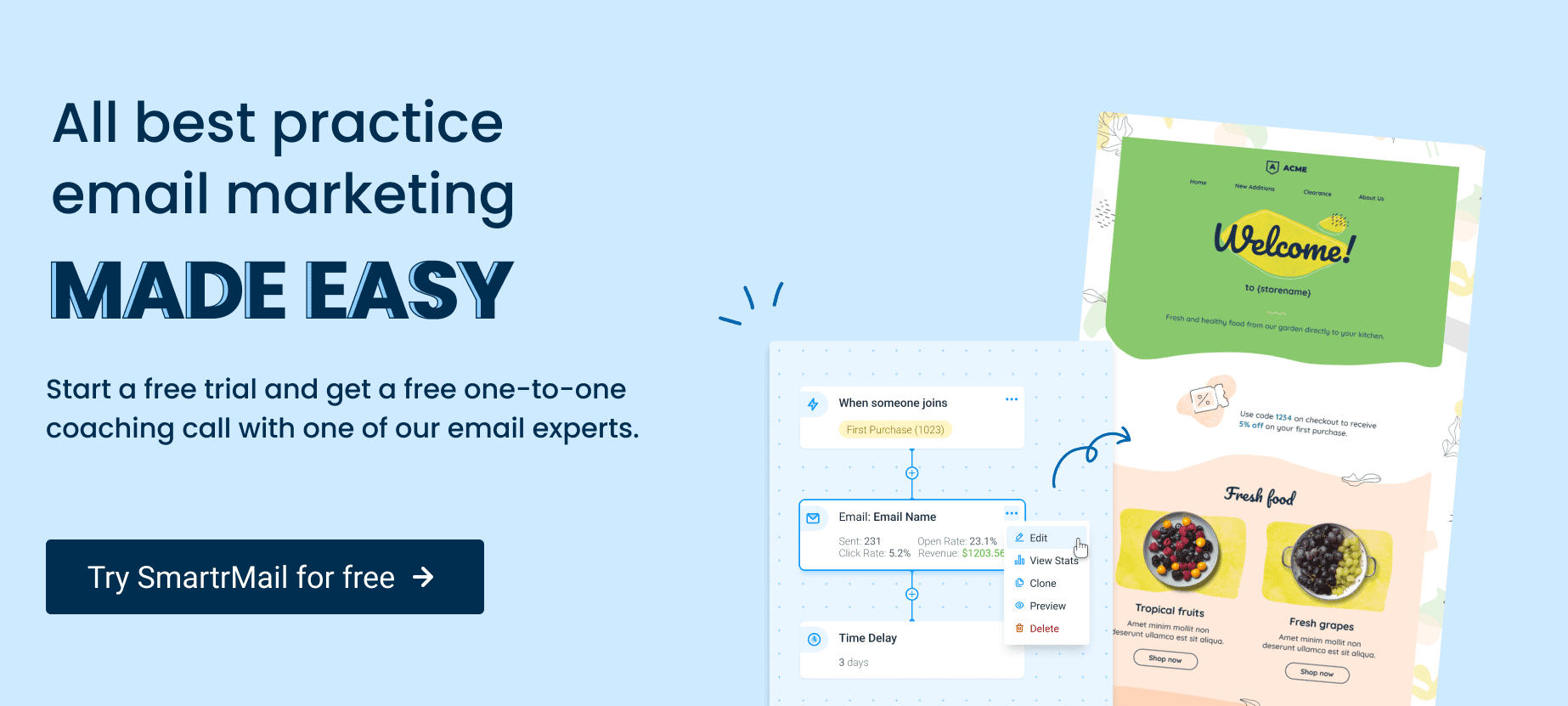
Email marketing and the 80/20 rule
If you haven’t heard of the 80/20 rule (Pareto Principle) for sales, it states that 80% of your sales come from 20% of your customers.
Not all customers are created equal; some will spend more than others. To maximize your revenue from top customers, you should email them more frequently.
If you have a big enough email list (3,000>) before you work out the time between purchases and email frequency, segment your list into two parts.
Segment 1: top 20% of customers (customers who spend the most money)
Segment 2: everyone else (80%)
Then work out the time between purchases and email frequency for both segments separately. In most cases the top 20% of customers will order more often than the 80%.
Note: If you have a larger email list, you can create more segments: top customer (20%), secondary customers (50%), and fringe customers (30%). You can then adjust email frequencies accordingly.
How to increase email frequency and click-through rates
If you increase email frequency, you decrease click-through rates.

We know that email marketing provides businesses (especially e-commerce stores) with the biggest return on investment of any inbound marketing method.
So the question is: how do you increase your email frequency to drive more profit while keeping click-through and open rates high, but unsubscribe rates low?
You do this by understanding each customer segment.
The second reason for unsubscribing from an email list after frequency was relevance.
Passion Delivery sent me six emails offering me everything from caviar, waffles, and foie gras to everyday essentials – items I’ve not ordered before and have little interest in.
They are obviously not segmenting their email list based on past purchase behavior, and worse still all their content is promotional marketing, without any valuable content.
If a customer orders once every 25 days, I suggest emailing them twice per month. The first email should be value and information based with little sales content, and the second email should be your pitch.
Here’s a good example of an content email from Harry’s – it makes a soft pitch for their products, but the content is useful regardless of whether or not you end up making a purchase right away.
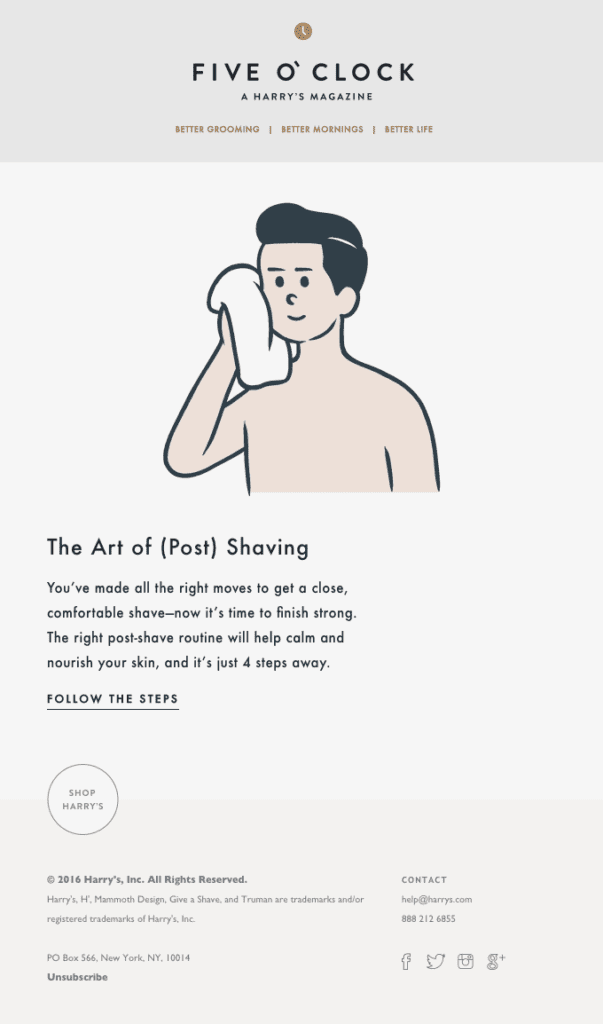
No pitch, and no upsell to buy add-ons or extras.
I feel the biggest mistake brands make is focusing all their email content on hard sells.
Make the 80% of customers who don’t order so frequently aware of how useful your product or service is to them through high-quality informative emails. If you can get this message across, they will end up buying more often.
Sign-up to our newsletter and receive a free eBook with hidden Email Marketing Tips
How should you be sending your emails?
There are two ways you can send emails to customers:
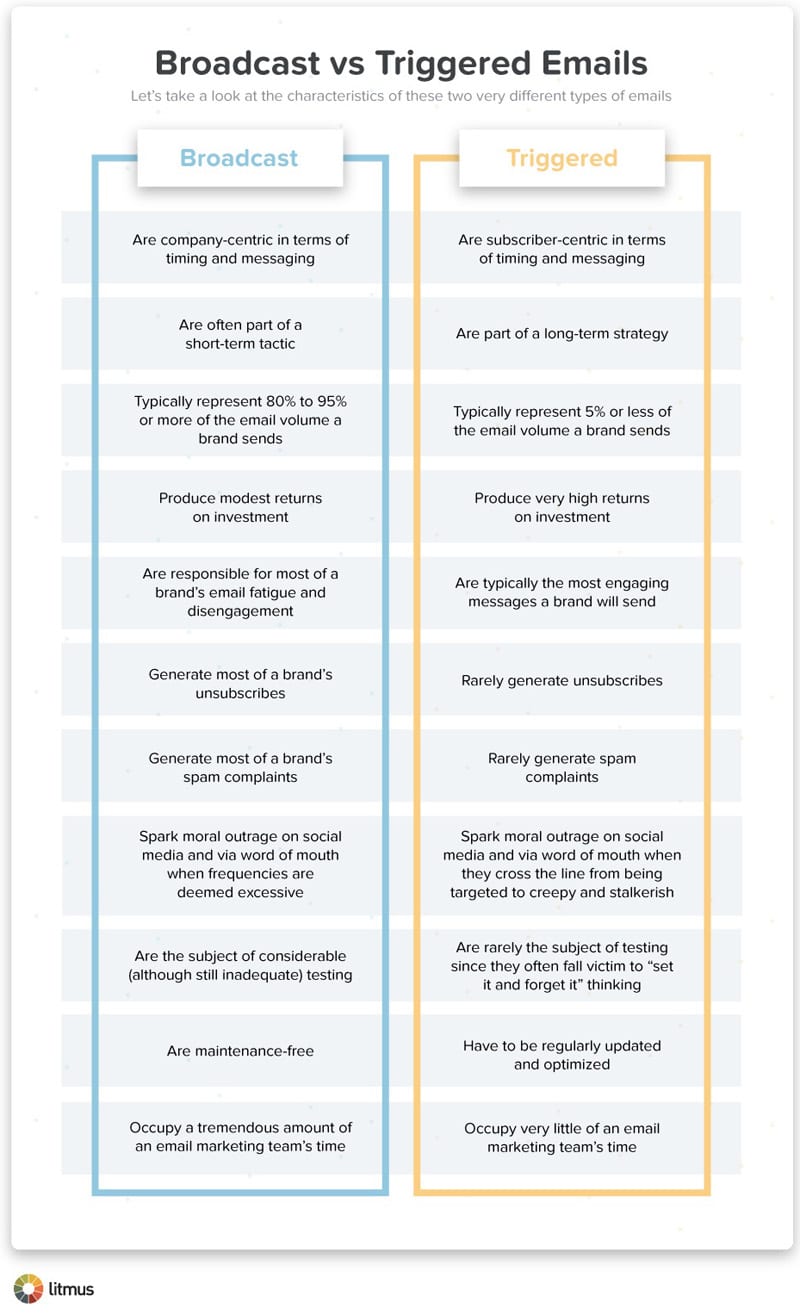
Broadcast emails – This is a single message that is usually sent to your entire email list. There are no follow-up emails and customers don’t trigger broadcast emails by performing a certain action.
Broadcast emails typically make up 80-95% of emails a brand sends. They also receive the highest amount of spam complaints and unsubscribe rates (see above). E-commerce brands should only send broadcast emails when sending customers information about new sales, company changes, or events that aren’t planned.
Triggered (automated) emails – As the name gives away, triggered emails are sent when a customer performs a certain action or falls into a new segment. For example, if a customer doesn’t within your average time between purchases (give a week or two), they are sent a reactivation email like so:

Triggered emails, on average, represent less than 5% of emails a brand sends but generate the highest ROI and lowest amount of spam complaints and unsubscribe rates.
Both broadcast and triggered emails have their place in your email marketing strategy and you should be applying the Pareto Principle: 80% of your emails should be triggered (abandon cart, welcome email, informational) and 20% (or even less) of your emails broadcast (company announcements, events, seasonal).
Once your email list contains more than 1,000 subscribers, I would go as far to say it’s impossible to scale and grow an e-commerce business without relying heavily on email automation.
What does your email frequency look like?
Are you sending emails too frequently, or not as many as you should?
One indicator of how customers feel about your email frequency is by looking at the overall open and click-through rates.
To get your numbers right, start by figuring out the average purchase frequency and time between purchases to get an idea of how many emails your customers should receive between orders.
Then you’ll need to choose how many of those emails will be informational and how many will be promotional. This will require a little bit of testing, but with SmartrMail’s deeply integrated e-commerce analytics this will be a piece of cake.
UPDATE: For up-to-date data on what the best practices are, check out our study on email marketing frequency best practices in 2019.


